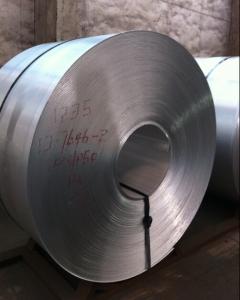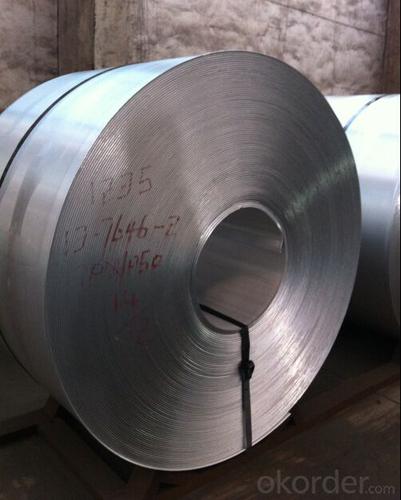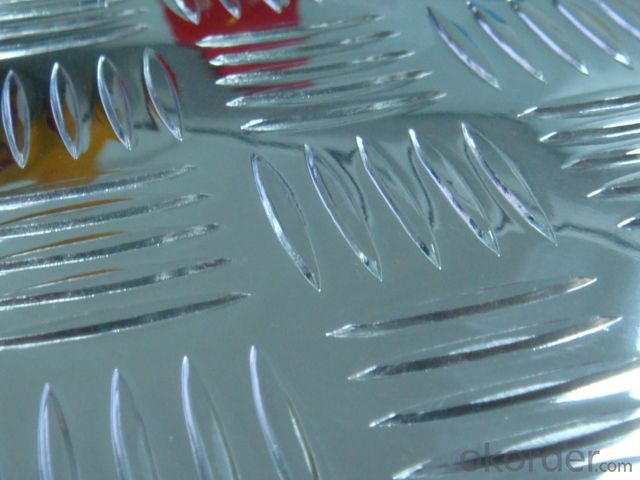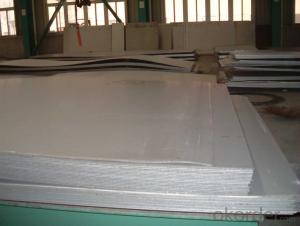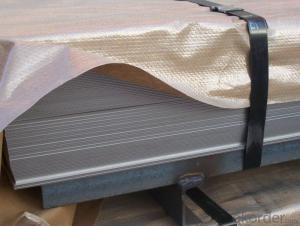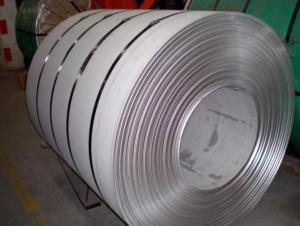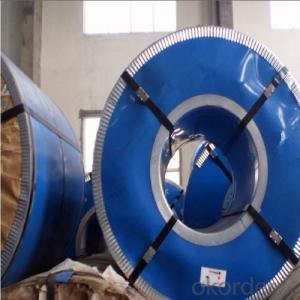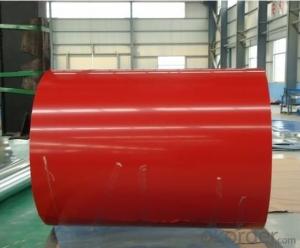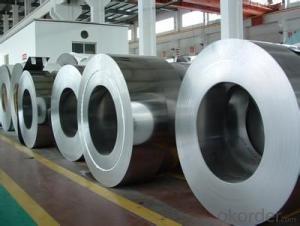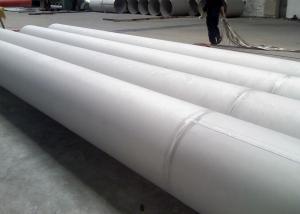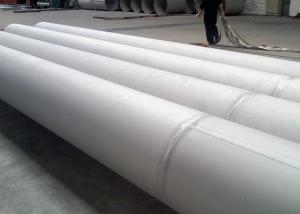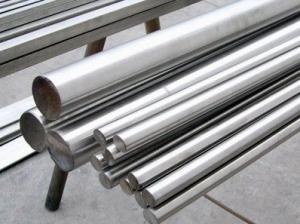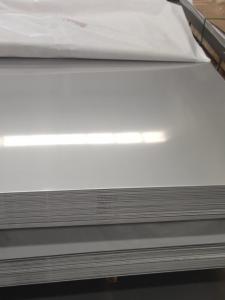Stainless Steel Cold Rolled Coil And Roll Stocks
- Loading Port:
- Shanghai
- Payment Terms:
- TT or LC
- Min Order Qty:
- 9 m.t.
- Supply Capability:
- 5000 m.t./month
OKorder Service Pledge
OKorder Financial Service
You Might Also Like
1.Structure of Product Description
Cold rolled Stainless steel sheet is widely used in the field of construction field and decoration field, etc. There are many different grades, such as: 200 series, 300 series, 400 series, 900series, etc. The detailed grade are as follows: 201, 202, 301, 304, 316, 410, 420, 430, etc.
The surface is including 2B, BA, Mirror Finish, Checkered, etc.
2. Main features of the product
a. Competitive price
b. Frist-Class Service.
c. Shortest service.
3. Image.
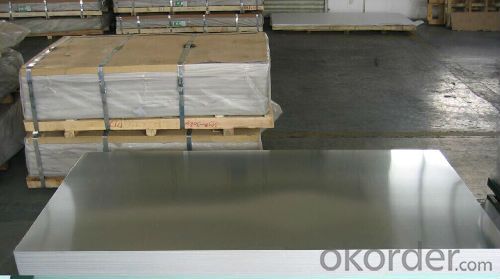
4. Product detailed sizes:
1000mm*2000mm, 1219mm*2438mm,1220mm*2440mm, 1250mm*2500mm,1500mm*3000mm, etc.
5. FAQ:
What is the quality standard?
---Usually our standard is GB3880-2006 or else.
What is the width range?
---It is from 1000mm to 2500mm, etc.
How many tons did you export in one year?
---Normally it is around 9000 tons totally.
Where is your client from?
---Normally it is from Japan, USA, ENGLISH, SINGAPORE, ETC.
What is your mainly products?
---Normally they are stainless steel sheet, stainless steel coil, stainless steel checkered sheet, stainless steel mirror finished sheet, color coated stainless steel sheet, etc.
- Q: Can stainless steel sheets be used for pharmaceutical equipment?
- Yes, stainless steel sheets can be used for pharmaceutical equipment. Stainless steel is a preferred material for pharmaceutical equipment due to its excellent corrosion resistance, durability, and ease of cleaning. It is non-reactive and does not release any harmful substances that could contaminate the pharmaceutical products or affect their quality. Stainless steel sheets can be fabricated into various shapes and sizes to meet the specific requirements of pharmaceutical equipment such as storage tanks, mixing vessels, sterilization equipment, and piping systems. Moreover, stainless steel's smooth surface prevents the accumulation of bacteria, making it a hygienic choice for pharmaceutical applications.
- Q: What are the different types of stainless steel sheet finishes for medical applications?
- Medical applications commonly utilize various types of stainless steel sheet finishes, each designed to possess specific qualities and characteristics necessary for such environments. A prevalent finish is the 2B finish, acquired through a cold-rolling process, which yields a smooth, reflective surface. This finish is frequently employed in medical instruments and equipment due to its ease of cleaning and high resistance to corrosion. Additionally, the No. 4 finish, also referred to as a satin finish, is widely used in medical cabinets and surfaces. This finish showcases a brushed appearance and offers a favorable combination of aesthetics and functionality. It boasts easy cleaning capabilities and reliable corrosion resistance. For more specialized applications, options like the No. 8 mirror finish are available. This finish exhibits a highly reflective surface and often finds application in surgical instruments and other high-end medical equipment. It not only presents a visually appealing surface but also demonstrates excellent corrosion resistance. Furthermore, alternative finishes, such as the bead blast finish, contribute to the medical equipment industry. This finish imparts a matte surface with a textured appearance, ideal for medical equipment requiring a non-reflective surface. Ultimately, the selection of a stainless steel sheet finish for medical applications depends on the specific requirements of the equipment or surface. Each finish possesses distinct advantages and characteristics, necessitating careful consideration to ensure optimal performance and longevity in a medical environment.
- Q: How do you remove fingerprints from stainless steel sheets?
- To remove fingerprints from stainless steel sheets, you can start by using a microfiber cloth or a soft cloth dampened with warm water and mild dish soap to gently wipe the surface. Then, rinse the cloth and wipe away any soap residue. If the fingerprints persist, you can try using a mixture of vinegar and water or rubbing alcohol on the cloth to further clean the stainless steel. Finally, make sure to dry the sheets thoroughly with a clean cloth to prevent water spots.
- Q: Are stainless steel sheets suitable for water storage tanks?
- Indeed, water storage tanks can be constructed using stainless steel sheets. Stainless steel possesses a remarkable resistance to corrosion, rendering it an optimal selection for water preservation. Its durability and longevity eliminate the need for frequent upkeep. Moreover, the smooth and non-porous surface of stainless steel sheets inhibits bacterial proliferation, thereby guaranteeing the cleanliness and safety of the stored water for consumption. Furthermore, stainless steel exhibits resistance against UV rays, extreme temperatures, and chemicals, affirming its dependability as a material for water storage tanks.
- Q: Can stainless steel sheets be used for food preparation surfaces?
- Yes, stainless steel sheets can be used for food preparation surfaces. Stainless steel is a popular choice for food preparation surfaces due to its excellent properties. It is non-porous, which means it does not absorb any liquids or bacteria that can contaminate the food. Stainless steel is also resistant to corrosion, staining, and rusting, making it a durable and long-lasting option for food preparation surfaces. Additionally, stainless steel is easy to clean, as it can withstand high temperatures and is not affected by most cleaning agents. This makes it a hygienic choice for food preparation surfaces, as it can be thoroughly sanitized to prevent the growth of bacteria. Overall, stainless steel sheets are a safe and practical choice for food preparation surfaces.
- Q: Are stainless steel sheets safe for contact with food?
- Yes, stainless steel sheets are safe for contact with food. Stainless steel is a non-reactive and non-toxic material, making it an excellent choice for food preparation and storage. It does not leach any harmful chemicals or flavors into the food and is resistant to corrosion, ensuring hygiene and safety.
- Q: Can stainless steel sheets be used for restaurant equipment?
- Certainly! Restaurant equipment can indeed utilize stainless steel sheets. Stainless steel is a highly favored option for restaurant equipment owing to its multitude of advantages. Its durability, resistance to corrosion, and ease of cleaning all contribute to its popularity. By employing stainless steel sheets, restaurant equipment can be crafted into diverse forms and dimensions, fulfilling the particular needs of countertops, sinks, tables, shelves, and food preparation surfaces. Moreover, stainless steel is an exceptionally hygienic substance that does not interact with food or taint it, rendering it perfect for deployment in restaurant environments where cleanliness and food safety are of utmost importance.
- Q: What are the benefits of using embossed stainless steel sheets?
- Embossed stainless steel sheets offer several benefits. Firstly, they provide a highly durable and long-lasting solution due to the strength and corrosion resistance of stainless steel. Additionally, the embossed pattern adds a unique aesthetic appeal, enhancing the overall look and feel of any space. Furthermore, the embossing helps to hide scratches and fingerprints, making the surface more forgiving and easier to maintain. Lastly, the texture created by embossing adds grip, making it suitable for applications where slip resistance is required, such as flooring or staircases.
- Q: What is the maximum width of a stainless steel sheet?
- The maximum width of a stainless steel sheet typically depends on the manufacturing capabilities and equipment used by the stainless steel sheet manufacturer. However, in general, stainless steel sheets are available in a wide range of widths to meet various industry and application requirements. Common standard widths for stainless steel sheets can vary from 36 inches (91.44 cm) to 72 inches (182.88 cm) or even wider. Additionally, some manufacturers may offer custom cutting services to provide stainless steel sheets with even larger widths based on specific customer needs. It is always advisable to consult with the manufacturer or supplier to determine the maximum width options available for the specific stainless steel sheet desired.
- Q: Can stainless steel sheets be used for water filtration systems?
- Certainly, water filtration systems can make use of stainless steel sheets. Due to their outstanding corrosion resistance and durability, stainless steel is widely employed in water filtration. It possesses the ability to withstand high pressure, temperature fluctuations, and exposure to various chemicals, rendering it suitable for prolonged use in water filtration applications. Moreover, the smooth surface of stainless steel sheets facilitates effortless cleaning and prevents the accumulation of bacteria and other impurities. Furthermore, stainless steel is a non-reactive material, guaranteeing the absence of any harmful substances in the filtered water and ensuring its safety for consumption. In conclusion, stainless steel sheets are a dependable and efficient choice for water filtration systems.
Send your message to us
Stainless Steel Cold Rolled Coil And Roll Stocks
- Loading Port:
- Shanghai
- Payment Terms:
- TT or LC
- Min Order Qty:
- 9 m.t.
- Supply Capability:
- 5000 m.t./month
OKorder Service Pledge
OKorder Financial Service
Similar products
Hot products
Hot Searches
Related keywords
